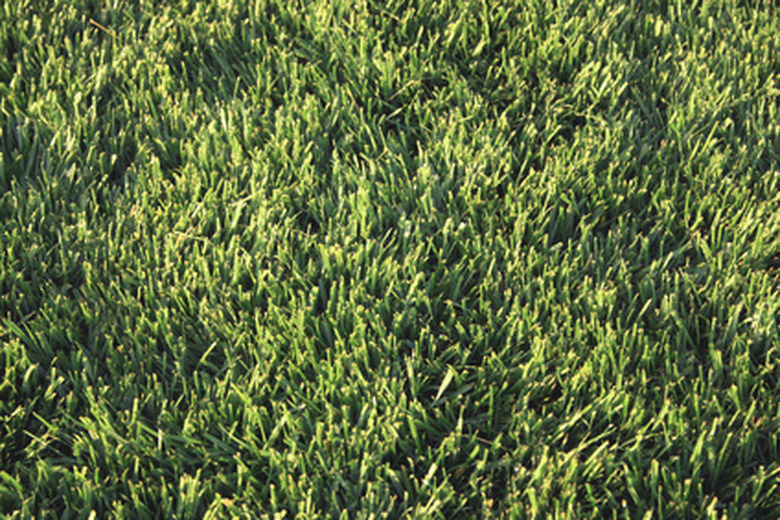Mowing The Lawn In Cold Temperatures
Depending on the species of lawn grass you are growing and your local climate, lawn grass will either go into dormancy when temperatures drop, or slow its growth rate considerably. In climates where frost or snow is very light and infrequent, lawn grass may need occasional mowing during the winter to keep it at a healthy and attractive blade height. A few guidelines should be observed to prevent damage to the grass plants as well as the soil substrate when mowing in cold weather conditions.
Step 1
Refrain from mowing your lawn when the grass blades are frozen or even dusted with frost. Wait to mow until the sun has warmed and thawed the blade tissues before mowing to the desired winter blade height for the species.
Step 2
Wait to mow the lawn after heavy rains or snow to let the grass blades dry off and the soil firm up before running the mower over the surface. Mowing on a muddy lawn can tear out delicate roots, rip blades unevenly and create divots and wheel gouges in the lawn surface that can be felt and will often be visible even after the soil firms and dries.
- Depending on the species of lawn grass you are growing and your local climate, lawn grass will either go into dormancy when temperatures drop, or slow its growth rate considerably.
- In climates where frost or snow is very light and infrequent, lawn grass may need occasional mowing during the winter to keep it at a healthy and attractive blade height.
Step 3
Remove no more than one-third of the total green blade length in any one mowing session to reduce the harsh cold weather stress on the grass plants. Shorten long overgrown blades with successive weekly mowing sessions to reduce the blade length gradually.
Lawn Mowing Tricks
Mowing your grass infrequently because it's a chore you hate doesn't save you work — it actually creates more work. Lawn care professionals employ a one-third rule to mow timing. Shorter grass also takes less strength and energy to tackle than high grass. Overlap your second strip with your first strip a little so you don't roll lines into your lawn and so you don't miss any spots. Try to keep flower beds to the opposite side of your spraying grass clippings, not only to keep them looking good but because grass clippings can also deposit weeds into your beds. The University of Minnesota Extension recommends leaving class clippings on your lawn so they can break down and fertilize the soil, so you won't be doing your lawn a disservice by spraying grass back onto it. To add more interest to your manicured lawn, attach a roller to the lawnmower to create darker and lighter "stripes" as you mow in rows and bend the grass blades in opposite directions.
- Remove no more than one-third of the total green blade length in any one mowing session to reduce the harsh cold weather stress on the grass plants.
- The University of Minnesota Extension recommends leaving class clippings on your lawn so they can break down and fertilize the soil, so you won't be doing your lawn a disservice by spraying grass back onto it.
Tip
Make sure your lawn mower has a very sharp, clean and disease-free blade when mowing. Cold temperatures put lawn grass under stress making it even more susceptible to pathogens that may be carried on the blade, or by tearing caused by a dull cutting blade.
